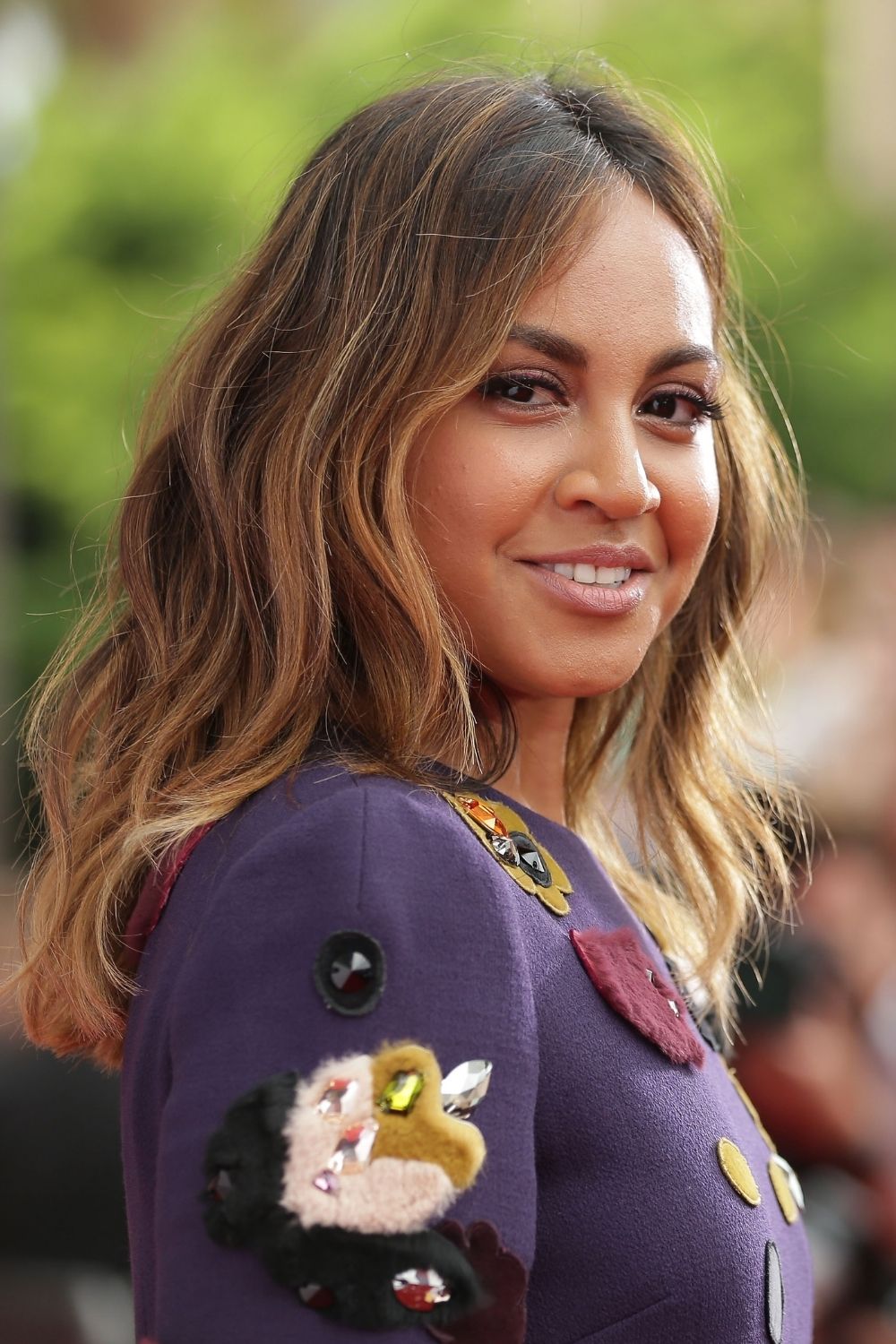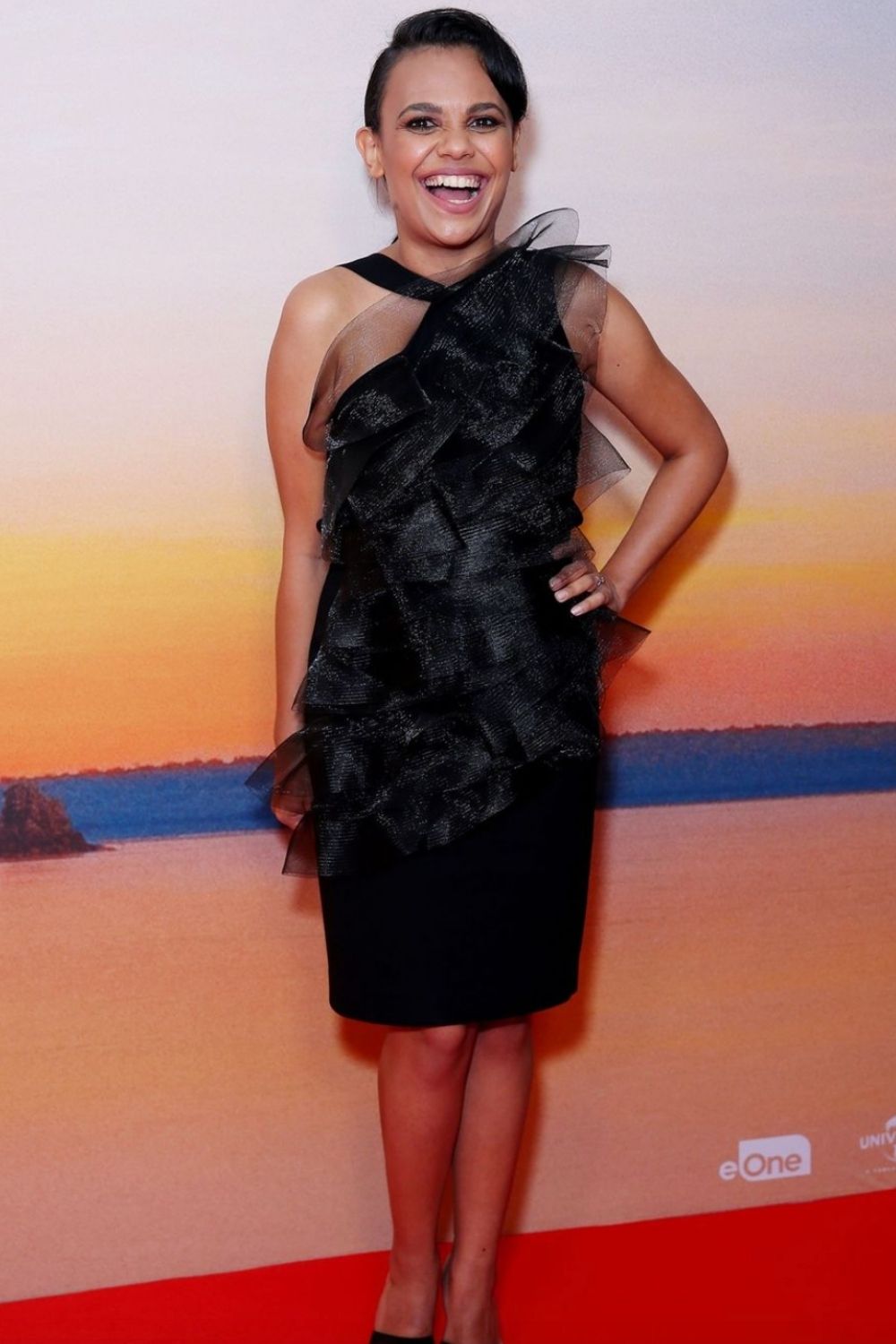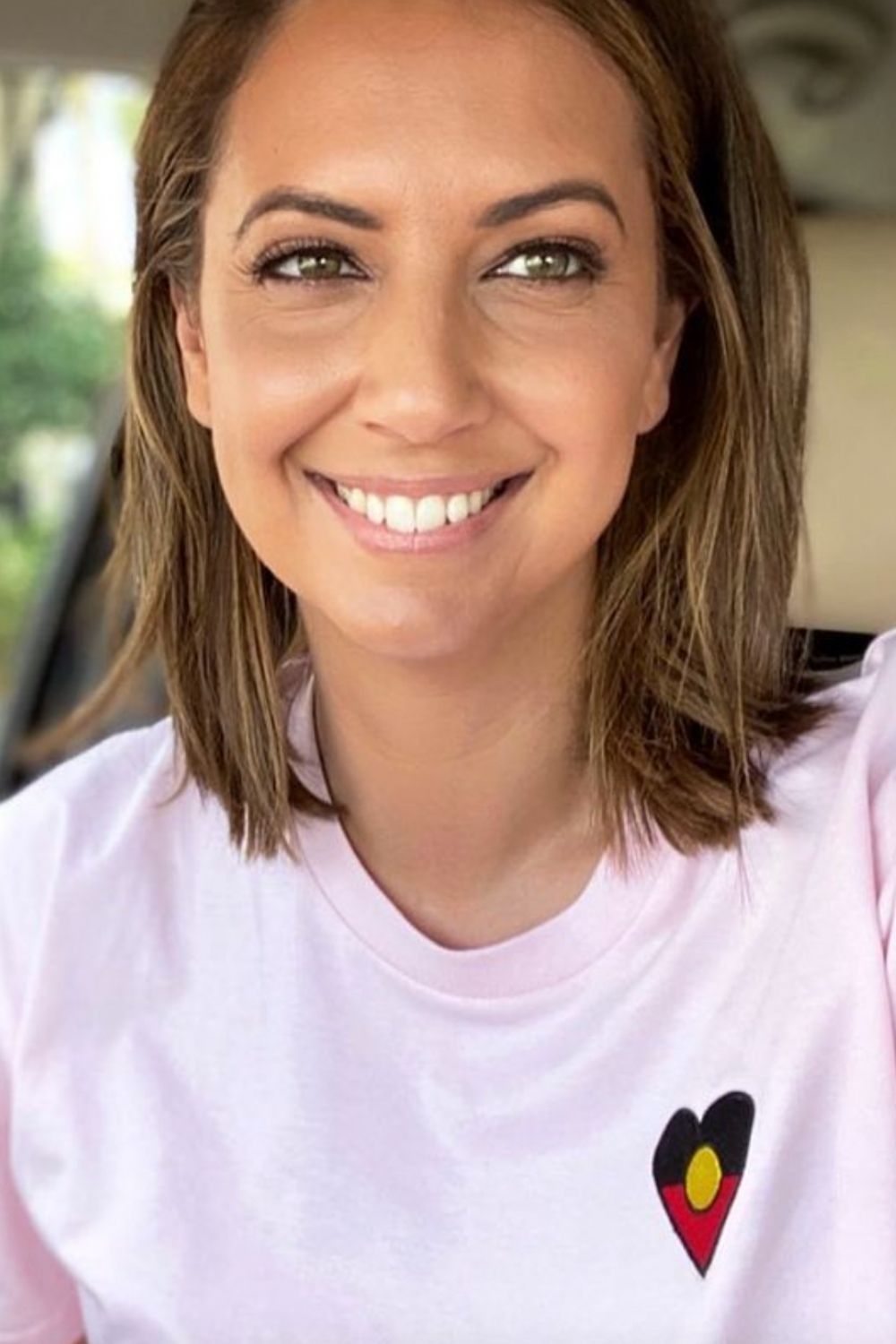We acknowledge the Gadigal people of the Eora Nation as the traditional custodians of the country this story is published on.
This NAIDOC week, there have been many dialogues started about First Nations stories, issues, achievements and more, with a focus on the need to heal Country.
Prevalent in the media sphere has been a plethora of Indigenous Australian performers, actors, presenters and more who have long been using their platforms to share their stories and advocate for change.
WATCH: Briggs remixes white-washed Australian anthem
NAIDOC originally stood for ‘National Aborigines and Islanders Day Observance Committee’. The purpose of the week is to herald the history, culture and achievements of Aboriginal and Torres Strait Islander peoples.
According to NAIDOC’s co-chair Shannon Dodson, “NAIDOC week actually started as a protest to Australia Day (Invasion Day). It started off as a day of mourning at first then turned into a day of celebration and then became a week”.
Celebrations kicked off on July 4th and end July 11th, though it’s important that discussions do not end there.
This year’s theme is ‘Heal Country’. Shannon elucidated this theme, telling The Project, “With the horrific bushfires that Australia experienced recently, as well as the desecration of sacred sights, we really wanted to shine a spotlight on those issues. It’s really about healing the country which will, in turn, heal the nation”.
Many Indigenous Australian voices have been prevalent in the media as they vocalise their respective experiences and goals for this week and beyond. We hope that by sharing their stories we can help amplify their messages further.

Jessica Mauboy
Known for The Sapphire’s, The Secret Daughter, as well as an extensive discography, Jessica Mauboy is one of Australia’s most famous musicians and actors.
Jess’ mother, Therese, is an Indigenous Australian from the Kuku Yalanji people of the rainforest regions of far north Queensland, while her father, Ferdy, was born in Indonesia.
“My middle name is Hilda, after my grandmother,” Jess told marie claire in 2019. “Nana was a soaring power. She was an Indigenous woman who fell in love with a white European man; it was a secret love because there was still segregation at the time. Being an Indigenous woman with a white fella, Nana struggled. But she stuck to her path. I think that’s where I get my fire from.”
The performer has long been an advocate for Indigenous issues. In 2019, Jessica, along with fellow actress Miranda Tapsell and model Samantha Harris, fronted marie claire’s #ItsTime campaign which pushed for reform to recognise Indigenous Australians in the constitution.
This NAIDOC week, Jessica has been incredibly vocal in her celebrations of Indigenous culture. On Monday, the musician went live on TikTok to share some of the First Nations songs that have shaped her throughout the years, while also raising funds for the Indigenous Literacy Foundation.
The actress has also been imploring her social media followers to take part in the important week.
Sharing the official NAIDOC week poster to her Instagram, the star wrote, “This year’s @NAIDOCWeek theme is Heal Country! It calls for all of us to continue to seek greater protections for our lands, our waters, our sacred sites and our cultural heritage from exploitation, desecration, and destruction.
“I really want to encourage you all to get involved and get educated about the importance of NAIDOC Week and the work that is being done and needs to be done. The NAIDOC Week website has some really helpful resources. Get amongst it you mob! ⠀
⠀
“For First Nations mob in the music industry, @SupportAct provides a dedicated First Nations wellbeing helpline along with other helpful wellbeing and financial services so if you’re in need of support I recommend reaching out to the legends at Support Act!”
Jess also took to her Story to share some of the official NAIDOC week Connect To Country templates, promoting important First Nations accounts to follow, including Indigenous owned merchandise company @clothingthegaps, Aboriginal artists @paul.mccann_art and @waynequilliam, the National Indigenous Television channel @nitv_au, and musician @barkaa__.

Samantha Harris
Indigenous model Samantha Harris has also long been vocal about her identity. Sam’s mother, originally of the Dunhutti tribe, is an Indigenous Australian member of the Stolen Generations, while her father is of German-English heritage.
“Growing up my mother always tried to ensure we were connected to our culture, our land and our heritage,” Sam told green + simple. “Aboriginal and Torres Strait Islander heritage is such an important part of Australian heritage and I’m so thankful that our mother taught us that. My heritage defines me in many ways – I am proud of the woman that I am and of the people that I come from.”
Like Jess, Sam took part in marie claire’s #ItsTime campaign in the fight to recognise Indigenous Australians in the constitution.
Throughout her career, Sam became the second Indigenous woman to be on the cover of Vogue magazine when she was just 18 years old. The model has also partnered with Indigenous Fashion Projects (@indigenousfashionprojects) which supports First Nations’ fashions and textiles.
In an interview with Nine Honey, Sam spoke about what the theme Heal Country means to her.
“Healing Country, I suppose, to me means looking after our world at its core. We don’t get another land once it’s scorched or destroyed, and we need to start now,” Sam told the publication.
Residing in Sydney, this NAIDOC week has seen Sam getting involved from within lockdown. The model has been vocal on her social media, taking to her Instagram story to applaud Channel Ten for performing a weather forecast with the country’s traditional names.
Sam has also used this time to question why Indigenous communities have yet to receive the COVID vaccination.
“Why haven’t the indigenous communities received the shot? They are the most vulnerable,” the model penned in her Instagram comments.

Brooke Blurton
Brooke Blurton first appeared on our screens in 2018 on The Bachelor and, now, the proud Noongar-Yamatji woman is gearing up to be Australia’s first bisexual Bachelorette.
Born to an Indigenous-Malaysian mum, with an English father, Brooke has always been incredibly vocal and proud about her cultural identity.
In an interview with the National Indigenous Times in 2019, the youth worker and mental health advocate explained that Indigenous Australians’ experiences when it comes to mental health differ greatly from non-Indigenous Australians’.
“Non-Aboriginal people are more willing to talk about their issues and their circumstances. A lot of the young Aboriginal people would come to the first session [at headspace] and not come back for the rest of the treatment plan,” Brooke said.
The 26-year-old constantly reinforces how much her culture means to her via her Instagram, sharing stunning shots from around the country, Aboriginal artwork and more.
Last month, Brooke posted a gorgeous Aboriginal artwork by First Nations artist Daisy Hill (@daisy_in_dots) called Sacred Valley.
“Daisy is one of the many incredible artists you all referred me to in response to my story when I asked for Aboriginal and Torres Strait Islander artist pages. Her works are amazing, as are many of the other artists’ I was sent. I will continue to share their pages so you can see the pieces they create and support these artists,” Brooke told her followers.
In the lead up to NAIDOC week, the mental health advocate shared a striking shot of the native land, writing, “Country, my continuous reminder to stay grounded in a world where it can so easily be forgotten 👣💛”.
On Wednesday, Brooke reinforced this year’s theme, sharing the words “heal country” to her Instagram grid, writing, “Happy NAIDOC week you Mob 💛”.

Miranda Tapsell
First Nations actress Miranda Tapsell, who starred alongside Jess Mauboy in The Sapphires, was born in Darwin, Northern Territory – her people are the Larrakia. She moved to Jabiru in West Arnhem Land when she was five years old and grew up in Kakadu National Park.
Over the years, Miranda has consistently used her platform as a tool of advocacy.
Speaking to marie claire in 2019 for the #ItsTime campaign, Miranda called for Indigenous recognition through a powerful statement which shed light on the disproportionate amount of deaths in the Indigenous community.
“Most non-Indigenous people are very aware of how many deaths there are in the community, they are aware of the gap in health and education,” the actress said.
“Most of my family members pass before the age of 60. To this day, I still have to say goodbye to loved ones too frequently. I don’t pretend to speak on behalf of my community, but I’m aware of the platform I have so I take the opportunity to be honest about what I see and hear.”
The Sapphires star went on to implore the entire country to advocate for Indigenous Australians.
“As a result of a very short-sighted view of history, most non-Aboriginal citizens forget that the structures on which the colonial parliament was built were never designed to see us. It erased the nation’s first people. Real change doesn’t happen unless everyone pushes for it.”
This NAIDOC week, the actress has shared a candid post about what Healing Country truly means to her.
Sharing the official NAIDOC week artwork to her Instagram, the star penned, “Happy #NAIDOC Week! The theme this year is Heal Country. Country is more than a place. Country is family, kin, law, lore, ceremony, traditions, and language.
“Healing Country means embracing First Nation’s cultural knowledge and understanding of Country as part of Australia’s national heritage.
“The right to protect Country and culture is fundamental.
“Destruction and desecration of our sacred lands or ancient sites – some of the oldest human occupation sites on the planet – is an enormous loss for both our nation and the world.
“But to truly heal Country we have more to do.”

Adam Briggs
Adam Briggs is an Indigenous Australian rapper, hip hop artist, as well as record label owner, comedy writer, actor and author. His father was from Cummeragunia and he is of the Yorta Yorta people, with the tribe name tattooed on his arm.
“Being koori is me; it’s not a hat I take on or off. I have my tribe tattooed on my arm, so every time I rock the mic people know I’m representing,” Briggs told G&T magazine.
Briggs’ consistent cultural representation landed him NAIDOC’s 2018 artist of the year. The official winner profile read, “Briggs is an impassioned voice for the rights of Aboriginal people.
“Briggs stands tall amongst his peers, working across multiple mediums, sparking conversations and creating cultural change.”
A year later, Briggs dissected the Australian anthem for The Weekly, explaining why the lyrics are problematic.
Referring to the line, “Australians all let us rejoice, for we are young and free,” Briggs countered, “Since all children in Northern Territory detention are Aboriginal and we are the most incarcerated people on earth, we don’t feel particularly free and, as for young, we’ve been here for 80,000 years.”
Referring to the line, “We’ve golden soil and wealth for toil,” Briggs contradicted, “See, we don’t see much of that wealth. Only 1 in 10 of us are ‘financially secure’.”
One of the top resources for this year’s theme, Heal Country, is the book Our Home, Our Heartbreak which is an adaptation of Briggs’ song The Children Came Back and, according to kooricurriculum.com, explores past and present Indigenous legends, emerging generations and “honours the oldest continuous culture on earth”.
This NAIDOC week, Briggs brought attention back to a 2017 episode of Q&A where politician Bob Katter identified as a “blackfella”.
Sharing the clip to his Instagram, Briggs captioned it “Black Lives Katter, wonder if he’s checking in this NAIDOC week?”.

Elaine Crombie
Indigenous Australian actor, director, singer, songwriter, comedian and producer Elaine Crombie has long been vocal about her identity. She is a Pitjantjatjara and Yankunytjatjara woman from South Australia.
Last year, Elaine spoke with Studio 10 about how the country can improve its education when it comes to Australia’s First Nation peoples.
“It’s a lot of listening, people just have to shush their mouths for a bit and just listen when blackfellas talk,” Elaine said. “If we’re talking about our mob, and our culture, and the way that we care about the land, then people should definitely listen to that.”
She went on to stress that schools need to funnel pre-colonisation truths into curriculums.
Elaine stars in History Bites Back which explores Indigenous history in the context of social security, citizenship and equal wages, nuclear bombs, civil actions and more.
The actor also hosts 10play’s documentary Stuff Everyone Should Know About Australia – busting myths and celebrating the truths about the history and culture of First Nations people.
This week Elaine spoke with The Project about what NAIDOC week means for her.
“For me, I wake up every day and every day is NAIDOC day,” the comedian said.
She went on to express the importance of reviving traditional languages, especially when it comes to healing the country.
“Our languages live within this land and if our land can hear our words being spoken again then that’s all a part of healing as well.”
Follow Elaine Crombie on Instagram here.

Brooke Boney
Brooke Boney is an Indigenous Australian presenter for Nine’s Today Show. She is a Gamilaroi woman and, when hosting Triple J, became known for using the traditional Gamilaroi greeting “Yaama”, meaning ‘hello’, when introducing herself .
Brooke has long advocated for First Nations issues. Last year, during reconciliation week, the presenter spoke on Today about the massive gap between Indigenous and non-Indigenous Australians when she said, “We die earlier, we have less education opportunities, less employment opportunities; for some Aboriginal people, life is grim and we need to come to a point where we talk about that and acknowledge it so we move forward”.
This NAIDOC week, Brooke spoke on Today about her family history, as well as shedding light on healing Country.
“I just wanted to have a chat to you because it is NAIDOC week this week,” Brooke began. “I am a Gamilaroi woman; my family have been there for tens and thousands of years. And when we talk about Country, we aren’t talking about ownership or property, what it means is that I belong to that Country and a part of that Country is in me.”
“So, when we talk about healing country, we are talking about a broad concept around protecting heritage and culture and all of the things that make that up.
“This week when we are celebrating NAIDOC week, keep that in mind that there is tens of thousands of years of culture and heritage right here in our backyards, and that is something that we can all be really proud of.”
Follow Brooke Boney on Instagram here.
WATCH: Brooke Boney talking about NAIDOC week 2021 (Story continues after video)
For more information about how to get involved during NAIDOC week and beyond, visit the official NAIDOC website. And make sure to check out all the links to First Nations Instagram accounts and resources throughout this article.



